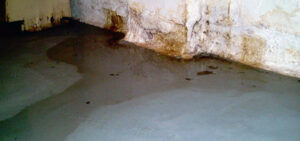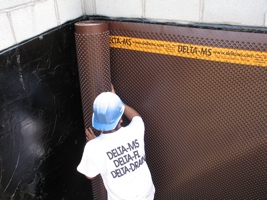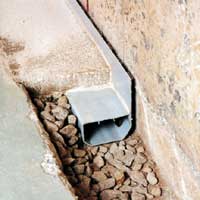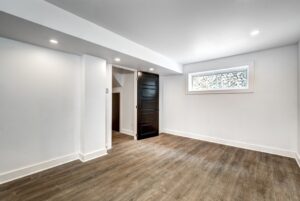Compare Basement Waterproofing Solutions
Many people get confused when trying to compare basement waterproofing solutions. Knowing how best to fix your wet basement can be tough if you do not do your homework before sitting down with basement waterproofing contractors. There are different ways to fix wet basements and some are better than others depending on the cause of your basement leaks.

Achieving a dry basement may not actually solve your foundation leaks even though you do not see water in your basement any more. First determine what type of problem you have by identifying if the water seepage is caused by surface water such as rain or snow melting and getting into your foundation / basement walls… or if you have a ground water problem which is caused by inadequate foundation drainage resulting in water build up below. When comparing basement waterproofing solutions you will learn some methods will give you a dry basement but not actually fix the problem.
If you have wet basement walls, or basement wall cracks that leak very soon after a rain event that is an indication that surface water is entering your foundation from top to bottom. Many people first try to build up the soil around the home to slope the water away which may or may not be good to do. NOTE: For the most part, if the soil around your home is flat or has any grade / slope away at all you are likely ok there. Do not add soil unless you raise the level of the foundation coating / exterior basement waterproofing to the desired dirt level otherwise you can be making your problem worse. Most likely wet walls means the original foundation seal is damaged or gone allowing dampness or water to soak into the foundation. This causes the peeling and bubbling paint / discoloration etc… You can achieve a dry basement by installing an interior basement waterproofing system;HOWEVER, to fix the cause of the problem in this case the best solution is to stop the water from the outside by installing a new exterior basement waterproofing system.

If you have water that only comes in under heavy conditions, it doesn’t come in until after the conditions have persisted awhile, walls are mostly all dry especially up high and the seepage happens at the wall floor seam…then you likely have a ground water problem. Under this scenario ground water rises after a heavy precipitation event / heavy snow melt event to the point that it builds up around the base of your foundation. Many homes either do not have drains under the basement floor to carry this water away or the drains that were installed by the builder were not properly designed to flow away. Some drains used from the 70’s through early 2000’s were the black corrugated pipe that has very small slots in them for the water to enter and these can easily get covered by a minimal amount of silt slowing the drainage down to the point of being ineffective. This type of drainage is no longer acceptable for basement waterproofing of new homes under current building codes for this reason and others.
An interior basement waterproofing system will catch ground water as it builds and prevent it from ever reaching the floor level. A true system will be called a footer drain and will be installed well below the floor next to the footer. The footer is a solid concrete “sidewalk” that is typically 18″ or more wide and at least 8″ thick top to bottom. This is the base the block walls are build on in most homes since the early 1900’s. Older homes will still benefit from this solution since there definitely was no drain designed into the original construction and the drains would be install at the base of the foundation.

The key to an effective interior basement waterproofing system is that the footer drains are installed with a down hill pitch or slope so that they will drain efficiently. When you compare basement waterproofing solutions installed from the inside, beware of basement systems that are installed on top of the footer. These are level gutters that collect water at the floor level. Water will lay in these gutters until it builds up enough of a level to push its way around to a draining point. laying water means mold, mildew, bugs, odors etc… This is simply an upgrade from the old plastic baseboards you can by and glue to the floor to collect water and keep it off of the floor.
There are several other things to consider and no two basements are identical. We do not believe in a one size fits all solution and we thoroughly review each basement before making recommendations. Pioneer Basement Solutions has a perfect customer service record with no complaints ever in the history of our company established in 1979!
[sc name=”awards”]
Contact us today to compare basement waterproofing solutions with one of our experts 





